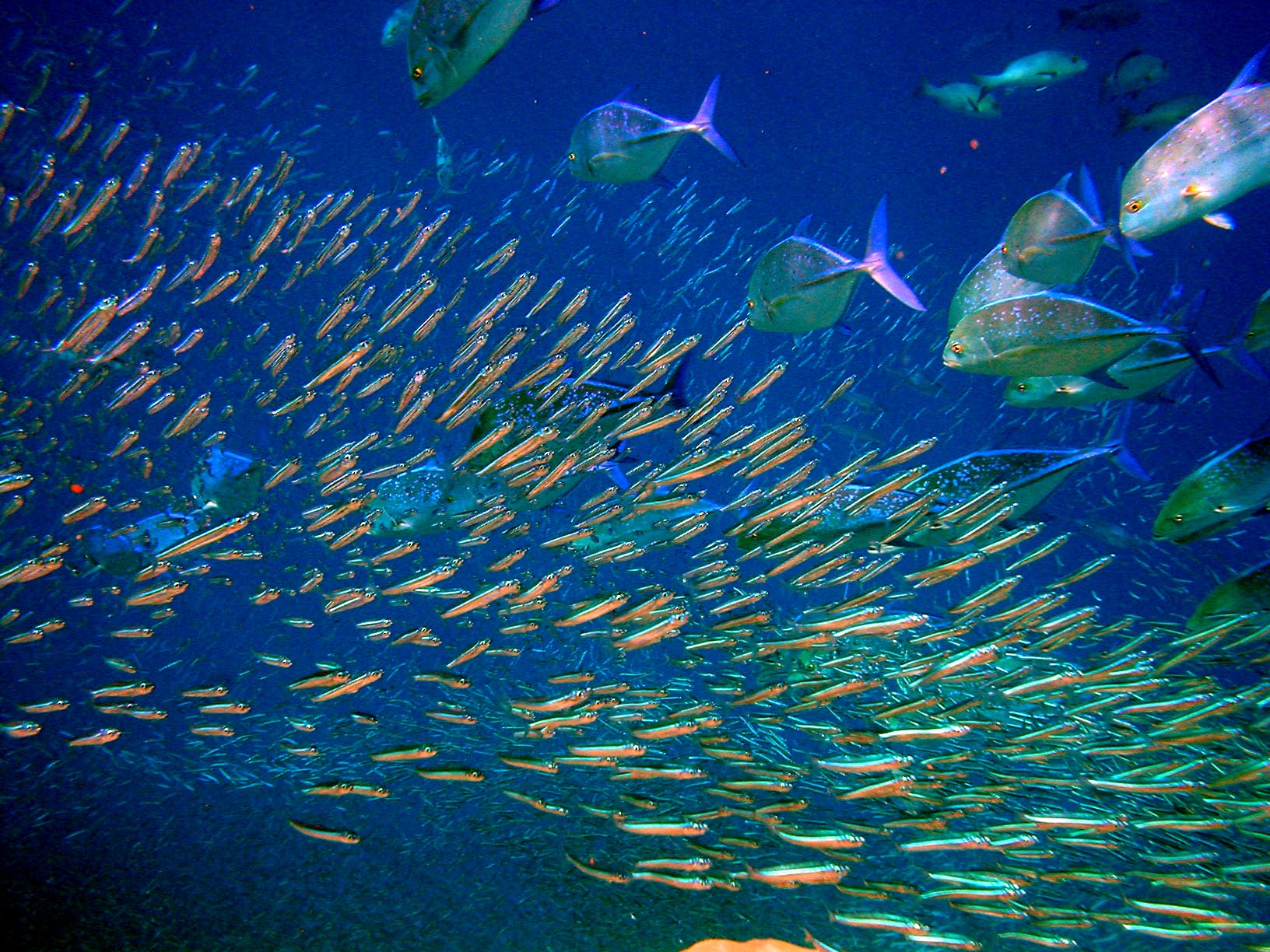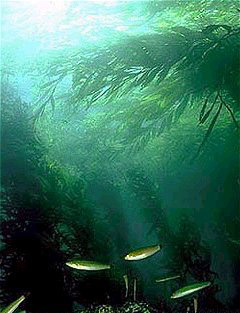|
Jacksmelt
''Atherinopsis californiensis'', the jack silverside or jacksmelt,Leo PinkasCalifornia Marine Fish Landings For 1972 and Designated Common Names of Certain Marine Organisms of California fish bulletin 161, Marine Resources Region, 1974 is a species of neotropical silverside native to the Pacific coast of North America from Oregon, United States to southern Baja California, Mexico. This species often grows to 49 cm (19 in), but specimens of in total length have been reported. It is silver throughout the body, with a grey dorsal pattern, and a light silver ventral-lateral, as well as a yellow spot present behind the eye, on the operculum. and is important commercially as a source of human food. It is the only known member of its genus. They are commonly confused with the '' Atherinops affinis'', the topsmelt silverside. ''Atherinopsis californiensis'' is a key element of Pacific coast marine ecosystems. This circumscription reveals its ability to adapt to changing environmental ... [...More Info...] [...Related Items...] OR: [Wikipedia] [Google] [Baidu] |
Charles Frédéric Girard
Charles Frédéric Girard (; 8 March 1822 – 29 January 1895) was a French biologist specializing in ichthyology and herpetology. Biography Girard was born on 8 March 1822 in Mulhouse, France. He studied at the College of Neuchâtel, Switzerland, as a student of Louis Agassiz. In 1847, he accompanied Agassiz as his assistant to Harvard University. Three years later, Spencer Fullerton Baird called him to the Smithsonian Institution to work on its growing collection of North American reptiles, amphibians and fishes. He worked at the museum for the next ten years and published numerous papers, many in collaboration with Baird. In 1854, he was naturalized as a U.S. citizen. Besides his work at the Smithsonian, he managed to earn an M.D. from Georgetown University in Washington, D.C. in 1856. In 1859 he returned to France and was awarded the Cuvier Prize by the Institute of France for his work on the North American reptiles and fishes two years later. When the American Civil Wa ... [...More Info...] [...Related Items...] OR: [Wikipedia] [Google] [Baidu] |
Smelt (fish)
Smelts are a family of small fish, the Osmeridae, found in the North Atlantic and North Pacific oceans, as well as rivers, streams and lakes in Europe, North America and Northeast Asia. They are also known as freshwater smelts or typical smelts to distinguish them from the related Argentinidae (herring smelts or argentines), Bathylagidae (deep-sea smelts), and Retropinnidae (Australian and New Zealand smelts). Some smelt species are common in the North American Great Lakes, and in the lakes and seas of the northern part of Europe, where they run in large Shoaling and schooling, schools along the saltwater coastline during spring migration to their spawning streams. In some western parts of the United States, smelt populations have greatly declined in recent decades, leading to their protection under the Endangered Species Act. The Delta smelt (''Hypomesus transpacificus'') found in the Sacramento Delta of California, and the eulachon (''Thaleichthys pacificus'') found in the Nor ... [...More Info...] [...Related Items...] OR: [Wikipedia] [Google] [Baidu] |
Climate Change
Present-day climate change includes both global warming—the ongoing increase in Global surface temperature, global average temperature—and its wider effects on Earth's climate system. Climate variability and change, Climate change in a broader sense also includes previous long-term changes to Earth's climate. The current rise in global temperatures is Scientific consensus on climate change, driven by human activities, especially fossil fuel burning since the Industrial Revolution. Fossil fuel use, Deforestation and climate change, deforestation, and some Greenhouse gas emissions from agriculture, agricultural and Environmental impact of concrete, industrial practices release greenhouse gases. These gases greenhouse effect, absorb some of the heat that the Earth Thermal radiation, radiates after it warms from sunlight, warming the lower atmosphere. Carbon dioxide, the primary gas driving global warming, Carbon dioxide in Earth's atmosphere, has increased in concentratio ... [...More Info...] [...Related Items...] OR: [Wikipedia] [Google] [Baidu] |
Biodiversity
Biodiversity is the variability of life, life on Earth. It can be measured on various levels. There is for example genetic variability, species diversity, ecosystem diversity and Phylogenetics, phylogenetic diversity. Diversity is not distributed evenly on Earth. It is greater in the tropics as a result of the warm climate and high primary productivity in the region near the equator. Tropical forest ecosystems cover less than one-fifth of Earth's terrestrial area and contain about 50% of the world's species. There are latitudinal gradients in species diversity for both marine and terrestrial taxa. Since Abiogenesis, life began on Earth, six major mass extinctions and several minor events have led to large and sudden drops in biodiversity. The Phanerozoic aeon (the last 540 million years) marked a rapid growth in biodiversity via the Cambrian explosion. In this period, the majority of Multicellular organism, multicellular Phylum, phyla first appeared. The next 400 mil ... [...More Info...] [...Related Items...] OR: [Wikipedia] [Google] [Baidu] |
Pelagic Fish
Pelagic fish live in the pelagic zone of ocean or lake waters—being neither close to the bottom nor near the shore—in contrast with demersal fish that live on or near the bottom, and reef fish that are associated with coral reefs. The marine pelagic environment is the largest aquatic habitat on Earth, occupying 1,370 million cubic kilometres (330 million cubic miles), and is the habitat for 11% of known fish species. The oceans have a mean depth of . About 98% of the total water volume is below , and 75% is below . Moyle and Cech, p. 585 Marine pelagic fish can be divided into coastal (inshore) fish and oceanic (offshore) fish. Coastal pelagic fish inhabit the relatively shallow and sunlit waters above the continental shelf, while oceanic pelagic fish inhabit the vast and deep waters beyond the continental shelf (even though they also may swim inshore). Pelagic fish range in size from small coastal forage fish, such as herrings and sardines, to large apex pred ... [...More Info...] [...Related Items...] OR: [Wikipedia] [Google] [Baidu] |
Kelp Forest
Kelp forests are underwater areas with a high density of kelp, which covers a large part of the world's coastlines. Smaller areas of anchored kelp are called kelp beds. They are recognized as one of the most productive and dynamic ecosystems on Earth. Although algal kelp forest combined with coral reefs only cover 0.1% of Earth's total surface, they account for 0.9% of global Primary production, primary productivity. Kelp forests occur worldwide throughout temperate and polar region, polar coastal oceans. In 2007, kelp forests were also discovered in tropical waters near Ecuador. Physically formed by brown macroalgae, kelp forests provide a unique habitat for marine organisms and are a source for understanding many ecological processes. Over the last century, they have been the focus of extensive research, particularly in Trophic dynamics, trophic ecology, and continue to provoke important ideas that are relevant beyond this unique ecosystem. For example, kelp forests can infl ... [...More Info...] [...Related Items...] OR: [Wikipedia] [Google] [Baidu] |
Invertebrate
Invertebrates are animals that neither develop nor retain a vertebral column (commonly known as a ''spine'' or ''backbone''), which evolved from the notochord. It is a paraphyletic grouping including all animals excluding the chordata, chordate subphylum Vertebrata, i.e. vertebrates. Well-known Phylum, phyla of invertebrates include arthropods, molluscs, annelids, echinoderms, flatworms, cnidarians, and sponges. The majority of animal species are invertebrates; one estimate puts the figure at 97%. Many invertebrate taxon, taxa have a greater number and diversity of species than the entire subphylum of Vertebrata. Invertebrates vary widely in size, from 10 Micrometre, μm (0.0004 in) myxozoans to the 9–10 m (30–33 ft) colossal squid. Some so-called invertebrates, such as the Tunicata and Cephalochordata, are actually sister chordate subphyla to Vertebrata, being more closely related to vertebrates than to other invertebrates. This makes the "invertebrates" para ... [...More Info...] [...Related Items...] OR: [Wikipedia] [Google] [Baidu] |
Zooplankton
Zooplankton are the heterotrophic component of the planktonic community (the " zoo-" prefix comes from ), having to consume other organisms to thrive. Plankton are aquatic organisms that are unable to swim effectively against currents. Consequently, they drift or are carried along by currents in the ocean, or by currents in seas, lakes or rivers. Zooplankton can be contrasted with phytoplankton (cyanobacteria and microalgae), which are the plant-like component of the plankton community (the " phyto-" prefix comes from , although taxonomically ''not'' plants). Zooplankton are heterotrophic (other-feeding), whereas phytoplankton are autotrophic (self-feeding), often generating biological energy and macromolecules through chlorophyllic carbon fixation using sunlightin other words, zooplankton cannot manufacture their own food, while phytoplankton can. As a result, zooplankton must acquire nutrients by feeding on other organisms such as phytoplankton, which are generally smaller t ... [...More Info...] [...Related Items...] OR: [Wikipedia] [Google] [Baidu] |
Kelp
Kelps are large brown algae or seaweeds that make up the order (biology), order Laminariales. There are about 30 different genus, genera. Despite its appearance and use of photosynthesis in chloroplasts, kelp is technically not a plant but a stramenopile (a group containing many protists). Kelp grow from stalks close together in kelp forest, very dense areas like forests under shallow temperate and Arctic oceans. They were previously thought to have appeared in the Miocene, 5 to 23 million years ago based on fossils from California. New fossils of kelp holdfasts from early Oligocene rocks in Washington State show that kelps were present in the northeastern Pacific Ocean by at least 32 million years ago. The organisms require nutrient-rich water with temperatures between . They are known for their high growth rate—the genera ''Macrocystis'' and ''Nereocystis'' can grow as fast as half a metre a day (that is, about 20 inches a day), ultimately reaching .Thomas, D. 2002. ''Seaweed ... [...More Info...] [...Related Items...] OR: [Wikipedia] [Google] [Baidu] |
Chorion
The chorion is the outermost fetal membrane around the embryo in mammals, birds and reptiles (amniotes). It is also present around the embryo of other animals, like insects and molluscs. Structure In humans and other therian mammals, the chorion is one of the fetal membranes that exist during pregnancy between the developing fetus and mother. The chorion and the amnion together form the amniotic sac. In humans it is formed by extraembryonic mesoderm and the two layers of trophoblast that surround the embryo and other membranes; the chorionic villi emerge from the chorion, invade the endometrium, and allow the transfer of nutrients from maternal blood to fetal blood. Layers The chorion consists of two layers: an outer formed by the trophoblast, and an inner formed by the extra-embryonic mesoderm. The trophoblast is made up of an internal layer of cubical or prismatic cells, the cytotrophoblast or layer of Langhans, and an external multinucleated layer, the syncytiotro ... [...More Info...] [...Related Items...] OR: [Wikipedia] [Google] [Baidu] |







